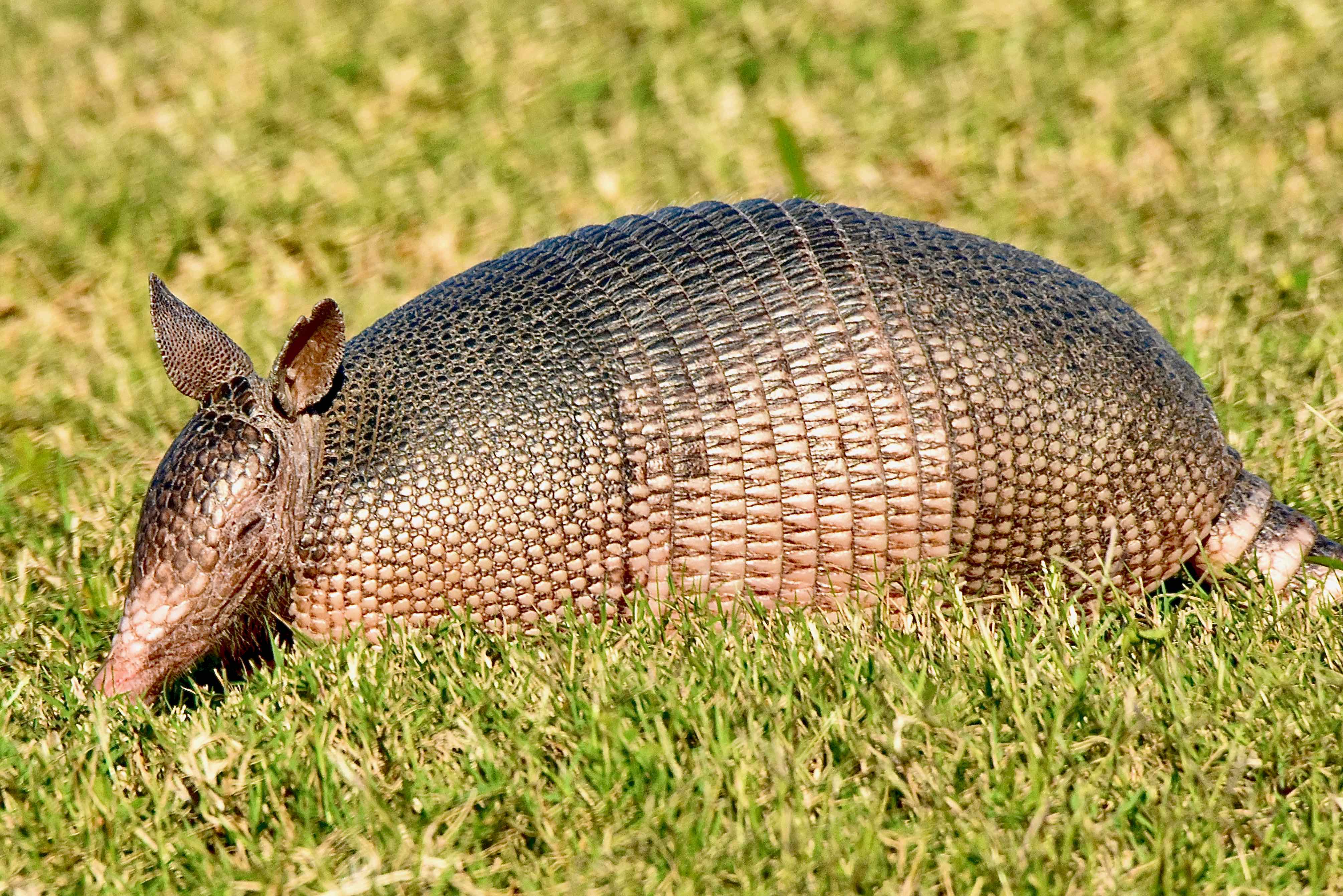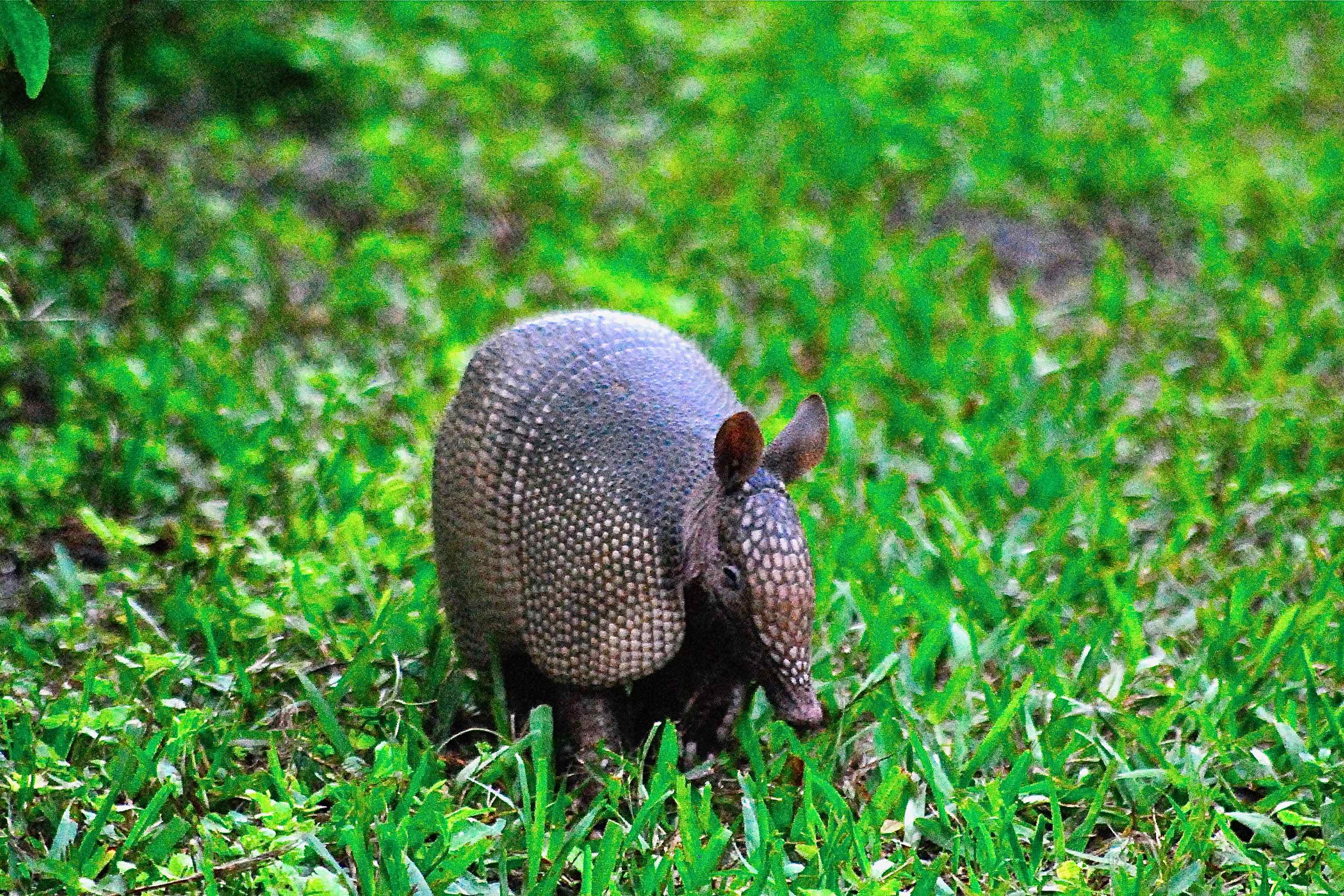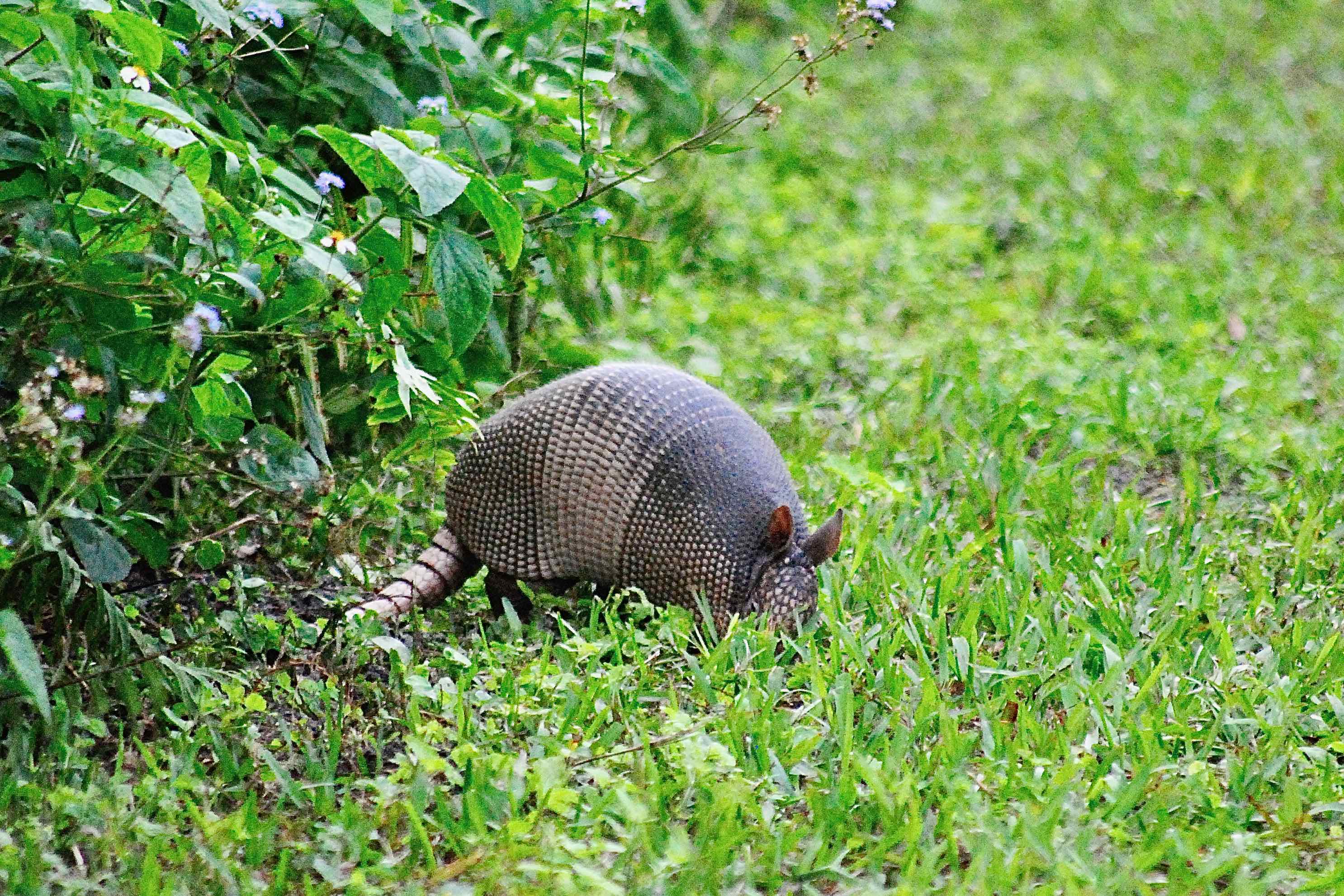
Nine-banded armadillo, photographed at Canaveral National Seashore, New Smyrna Beach, Volusia County, in March 2019.
The first thing that comes to mind when you see an armadillo is tank, because of its extensive body armor. Every inch of its body other than its ears and belly is protected by a flexible, leathery shield.
But if you study them, you start seeing a living plow. We once watched one working the forest floor at Fern Forest Nature Center in Coconut Creek for about 15 or 20 minutes, and in all that time, his face was almost constantly buried in leaf litter and dirt searching for some juicy bug to eat. This is the nine-banded armadillo, Dasypus novemcinctus. It's what's beneficial about him, from a human point of view, and also what's destructive.
Armadillos are not native to Florida. They were introduced into the Sunshine State on the east coast during the 1920s. A second population came into the Panhandle from southern Alabama during the 1960s.
The groups eventually merged, as the armadillo population expanded. They're now found in almost every corner of Florida; the exceptions: the Keys and parts of the Everglades and Big Cypress Swamp.
It is an ancient animal. Fossils of an armadillo ancestor the size of a rhinoceros date back 60 million years. The modern version is much more modest in size; it can approach a foot-and-a-half in length — two-and-a-half including the tail — and weigh 17 pounds. And despite the name, the number of bands it sports can range between as few as seven and as many as 11.
Its native range is the southwest, but has expanded to the east coast and as far north as South Carolina. Cold weather, theoretically at least, limits how far north it can go, but they been spotted in Illinois and Nebraska, and some believe they could survive as far north as Massachusetts.
They are nocturnal animals, most active in the evenings and at night, but they do make daytime forays. The armadillos photographed on these pages were found out and about searching for food in midafternoon.
The armadillo's body armor is flexible; it covers all but the ears and the belly. Their eyesight is poor — not surprising given the small slits they have for eyes and how they forage — as is their hearing, but they do have a strong sense of smell, again not surprising considering their long nose and, again, the way they hunt. Despite their clunky appearance, armadillos are fairly agile. They're are decent swimmers, aided by an ability to inflate their stomachs for greater buoyancy. They can ford smaller streams by walking the bottom while completely submerged. When startled, they'll jump straight up. The jump is supposed to startle would-be predators, but too often they'll be startled in the middle of a road by an oncoming car. Their instinct is to jump instead of getting out of the way, leading to a lot of roadkill.
They breed in late July or early August, with the babies born in late January or early February. They bear one litter a year, each with four identical offspring from a single egg. Fourteen weeks pass after mating before the embryo is implanted; four more months pass before the litter is born. Young armadillos can see and walk after they're born, but they lack the armor that protects adults. Mom will nurse them for two months, and they'll stay with her for another two months. The typical armadillo lifespan is somewhere between seven and 20 years.
They live in burrows that can be as long as 15 feet; a single armadillo might have multiple burrows, in fact. They spend their days deep inside. They are prodigious eaters of bugs — when they're plowing through leaf litter, they're looking for scorpions, cockroaches, worms, spiders, larva and other delightful treats. According to the Univeristy of Florida, an armadillo has been known to eat an entire nest of yellow jackets. That's the good side. The not-so-good side: the damage inflicted when an armadillo decides to find dinner in someone's lawn or garden.
Armadillos are known to carry the bacterium that causes leprosy, Mycobacterium leprae. They're the only nonhuman animal that can carry the disease. In parts of its range, the infection rate can be fairly high. Most of us humans are genetically immune to the disease and most of the few Americans who contract it, get it while traveling outside the country, not from armadillos.
Armadillos — Spanish for little armored ones — are members of Dasypodidae, the family of armadillos. One oddity about the family: most of its members are extinct. The only genus with living species is Dasypus, which includes seven members, one of which is the nine-banded.



